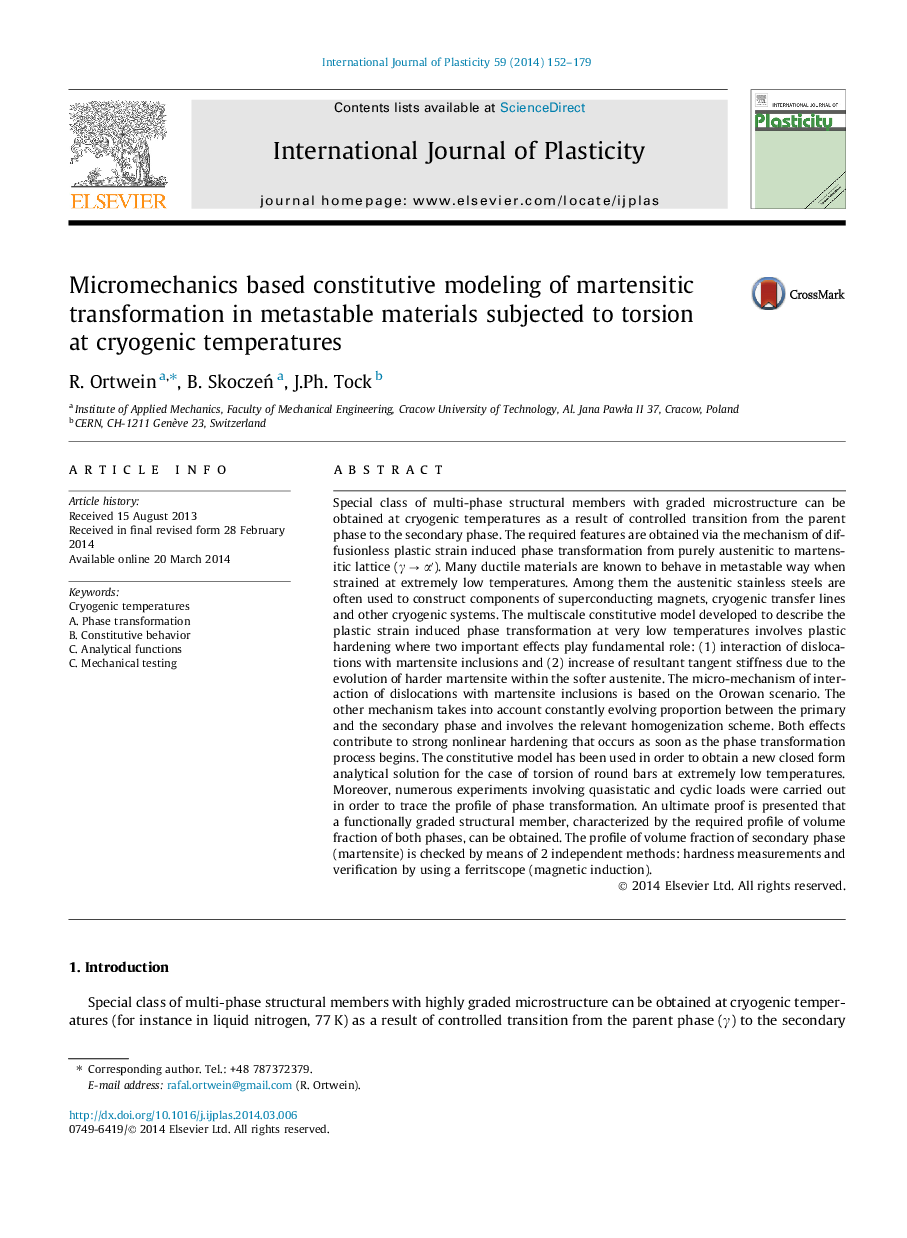| کد مقاله | کد نشریه | سال انتشار | مقاله انگلیسی | نسخه تمام متن |
|---|---|---|---|---|
| 786756 | 1465614 | 2014 | 28 صفحه PDF | دانلود رایگان |
• 3D constitutive model of plastic strain induced phase transformation is developed.
• Functionally graded structural elements are obtained by torsion at 77 K.
• Distribution of martensite within the cross-section is measured.
• Torque versus angle of twist is measured and compared with the numerical results.
• Closed form analytical solutions for torsion of circular rods are obtained.
Special class of multi-phase structural members with graded microstructure can be obtained at cryogenic temperatures as a result of controlled transition from the parent phase to the secondary phase. The required features are obtained via the mechanism of diffusionless plastic strain induced phase transformation from purely austenitic to martensitic lattice (γ → α′). Many ductile materials are known to behave in metastable way when strained at extremely low temperatures. Among them the austenitic stainless steels are often used to construct components of superconducting magnets, cryogenic transfer lines and other cryogenic systems. The multiscale constitutive model developed to describe the plastic strain induced phase transformation at very low temperatures involves plastic hardening where two important effects play fundamental role: (1) interaction of dislocations with martensite inclusions and (2) increase of resultant tangent stiffness due to the evolution of harder martensite within the softer austenite. The micro-mechanism of interaction of dislocations with martensite inclusions is based on the Orowan scenario. The other mechanism takes into account constantly evolving proportion between the primary and the secondary phase and involves the relevant homogenization scheme. Both effects contribute to strong nonlinear hardening that occurs as soon as the phase transformation process begins. The constitutive model has been used in order to obtain a new closed form analytical solution for the case of torsion of round bars at extremely low temperatures. Moreover, numerous experiments involving quasistatic and cyclic loads were carried out in order to trace the profile of phase transformation. An ultimate proof is presented that a functionally graded structural member, characterized by the required profile of volume fraction of both phases, can be obtained. The profile of volume fraction of secondary phase (martensite) is checked by means of 2 independent methods: hardness measurements and verification by using a ferritscope (magnetic induction).
Journal: International Journal of Plasticity - Volume 59, August 2014, Pages 152–179
